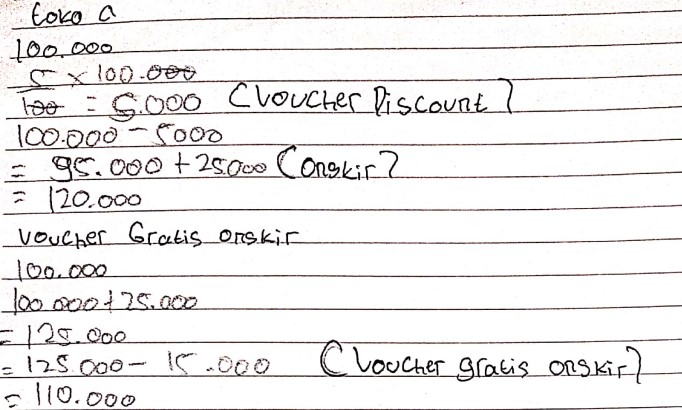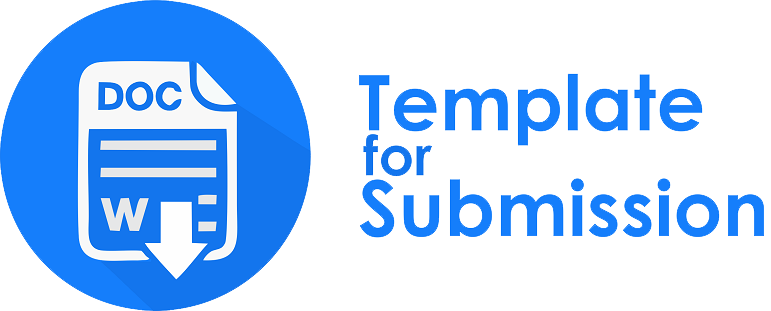KEMAMPUAN NUMERASI PESERTA DIDIK MELALUI IMPLEMENTASI BLENDED LEARNING PADA MATERI BILANGAN PECAHAN
Abstract
This study aims to describe the numeracy skills of students in the matter of fractional arithmetic. This research method is a type of combination research. The research subjects were 31 students of class VIIU1 SMP Muhammadiyah 4 Palembang, but three people were chosen as subjects to be interviewed. The data collection techniques in this study were questionnaires, tests, and interviews. The instrument in this study is the researcher and assisted by questionnaires, numeracy questions, and interview guidelines. The data analysis technique of this research is quantitative and qualitative with the stages of quantitative data analysis. The results showed that the response of students to blended learning was good. The numeracy ability of students after being given blended learning on fractional numbers is still low. This can be seen from the results of the written test which showed that there were only 2 students in the high category, 6 in the medium category, and 23 in the low category. Based on the results of written tests and interviews that have been analyzed based on indicators of numeracy skills, students are able to using various numbers or mathematical symbols related to basic mathematics and able to analyze information displayed in various forms (graphs, tables, charts, diagrams). This can be seen in students who are able to use mathematical concepts and procedures on fractional number material. Most of the students are not able interpret the results of the analysis to predict and make decisions, because students are not used to reinterpreting the results of calculations into the context of the problem
Downloads
References
Anggraini, E. (2018). Pengaruh pembelajaran blended learning menggunakan aplikasi google classroom terhadap pemahaman konsep matematis pada peserta didik kelas VIII SMPN 9 Bandar Lampung (Skripsi, UIN Raden Intan Lampung)
Aritonang, I., & Safitri, I. (2021). Pengaruh blended learning terhadap peningkatan literasi matematika siswa. Jurnal Cendekia: Jurnal Pendidikan Matematika, 5(1), 735-743.
Ariyana, Y., Bestary, R., & Mohandas, R. (2018). Buku pegangan pembelajaran berorientasi pada keterampilan berpikir tingkat tinggi. Direktorat Jenderal Guru dan Tenaga Kependidikan Kementerian Pendidikan dan Kebudayaan Hak
Badaruddin, K., & Anggo, M. (2016). Analisis Kesalahan Dalam Menyelesaikan Soal–Soal Operasi Hitung Pecahan Pada Siswa Kelas Vii Smp Negeri 10 Kendari. Jurnal Penelitian Pendidikan Matematika, 5(1), 99-113.
Carroll, J. (1989). The Carroll Model: A 25 Years retrospective and perspektive view. Educational Researcher. 18(1), 26-31.
Chaeruman, U. A., Wibawa, B., & Syahrial, Z. (2018). Determining the appropriate blend of blended learning: A formative research in the context of Spada-Indonesia. American Journal of Educational Research, 6(3), 188-195
Garrison, D. R., & Kanuka, H. (2004). Blended learning: Uncovering its transformative potential in higher education. The internet and higher education, 7(2), 95-105
Garrison, D. R., & Vaughan, N. D. (2008). Blended learning in higher education: Framework, principles, and guidelines. John Wiley & Sons
Hadi, S., & Novaliyosi, N. (2019). TIMSS Indonesia (trends in international mathematics and science study). Prosiding Seminar Nasional & Call For Papers.
Han, W., Susanto, D., Dewayani, S., Pandora, P., Hanifah, N., Miftahussururi, M., & Akbari, Q. S. (2017). Materi pendukung literasi numerasi. Jakarta: Kementrian Pendidikan Dan Kebudayaan
Hidayatulloh, D. A., Fuady, A., & El Walida, S. (2021). Analisis Kemampuan Literasi Matematis Ditinjau Dari Self Confidence Peserta Didik Kelas Vii Smp Pada Materi Aritmatika Sosial. Jurnal Penelitian, Pendidikan, dan Pembelajaran, 16(12)
Jumaini, J., Hertin, H. H., Nisfiyati, M., & Ibrahim, M. (2021). Penerapan Metode Pembelajaran Blended Learning dalam Meningkatkan Pemahaman Konsep Hasil Belajar Siswa: Sebuah Meta-Analisis. Al Khawarizmi: Jurnal Pendidikan dan Pembelajaran Matematika, 5(1), 48-63
Kemdikbud. (2017). Panduan Implementasi Keterampilan Abad 21 Kurikulum 2013 di SMA. Jakarta: Dit. PSMA Ditjen Pendidikan Dasar dan Menengah.
Kemdikbud. (2019). Numerasi dasar: membangun fondasi belajar. Jakarta Pusat: Pusat Penelitian Kebijakan Pendidikan dan Kebudayaan
Khorudin, A., Setyawati, R.D., & Nursyahida, F. (2017). Profil kemampuan literasi matematika siswa berkemampuan matematis rendah dalam menyelesaikan soal berbentuk PISA. AKSIOMA: Jurnal matematika dan pendidikan matematika, 8(2), 33-42.
Komala, E., & Sarmini, S. (2020). Kemampuan representasi simbolik matematik siswa SMP menggunakan blended learning. Prisma, 9(2), 204-212
Mahmud, M. R., & Pratiwi, I. M. (2019). Literasi numerasi siswa dalam pemecahan masalah tidak terstruktur. Kalamatika: Jurnal Pendidikan Matematika, 4(1), 69-88
Marsela, I. (2018). Analisis Kesalahan Siswa Dalam Menyelesaikan Masalah Pecahan Dalam Bentuk Cerita Pada siswa Kelas VII SMP Negeri 5 Palopo. Prosiding Seminar Nasional, 3(1), 424-429
Maulidina, A. P., & Hartatik, S. (2019). Profil Kemampuan Numerasi Siswa Sekolah Dasar Berkemampuan Tinggi Dalam Memecahkan Masalah Matematika. Jurnal Bidang Pendidikan Dasar (JBPD), 3(2)
Murtiyasa, B., & Wulandari, V. (2020). Analisis kesalahan siswa materi bilangan pecahan berdasarkan teori Newman. AKSIOMA: Jurnal Program Studi Pendidikan Matematika, 9(3), 713-726
NCTM. (2007). Second handbook of research on mathematics teacing and learning. Washington. DC: National Council of Teacher of mathematics
Nugraha, D. G. A. P., Astawa, I. W. P., & Ardana, I. M. (2019). Pengaruh model pembelajaran blended learning terhadap pemahaman konsep dan kelancaran prosedur matematis. Jurnal Riset Pendidikan Matematika, 6(1), 75-86.
OECD. (2019). PISA 2018 assesment and analytical framework. Paris: OECD Publishing
OECD. (2019). PISA 2018 Results (Volume 1): what students know and can do. Paris: OECD Publishing
Pajrin, V. (2020). Kesalahan Siswa SMP Kelas VII dalam menyelesaikan soal operasi hitung bilangan pecahan (Skripsi, Universitas Muhammadiyah Palembang)
Rahayu, R.S., & Zulkadi, Z. (2018). Kemampuan literasi matematika siswa kelas IX ditinjau dari proses matematika berdasarkan framework PISA 2015 (Skripsi, Universitas Sriwijaya)
Santi, L. M., & Sudihartinih, E. (2019). Analisis kesalahan siswa sekolah menengah pertama pada materi pecahan. JP (Jurnal Pendidikan): Teori dan Praktik, 4(2), 1-5
Sari, S. P., Zulkardi, Z., & Darmawijoyo, D. (2021). Students' Numeracy Skills Relating to Algebra Topic Using COVID-19 Context. JTAM (Jurnal Teori dan Aplikasi Matematika), 5(1), 182-192
Setyaningrum, W. (2018). Blended Learning: Does it help students in understanding mathematical concepts?. Jurnal Riset Pendidikan Matematika, 5(2), 244-253
Sopamena, N. (2020). Analisis Kesalahan Siswa dalam Menyelesaikan Masalah Bilangan Pecahan Campuran Kelas VII SMP IT As-Salam Ambon (Skripsi, IAIN Ambon)
Stein, J., & Graham, C. R. (2014). Essentials for blended learning: A standards-based guide. New York: Routledge
Sugiyono. (2017). Metode penelitian kuantitatif, kualitatif dan R&D. Bandung: Alfabeta.
Zuhri, M. S., Setyowati, R. D., & Viani, C. F. (2020, August). Kesalahan siswa SMP dalam memecahkan masalah soal tipe high order thinking skill (HOTS) ditinjau dari gaya belajar visual. In Prosiding Seminar Nasional Matematika dan Pendidikan Matematika (Vol. 5, pp. 428-434).

Copyright (c) 2022 Ayu Lestari, Hapizah Hapizah, Budi Mulyono, Ely Susanti

This work is licensed under a Creative Commons Attribution-NonCommercial-ShareAlike 4.0 International License.
License and Copyright Agreement
By submitting a manuscript to Jurnal Pendidikan Matematika (JUPITEK), the author(s) certify and agree to the following terms:
- Originality and Authority: The submitting author is authorized by all co-authors to enter into this agreement. The manuscript describes original work that has not been published previously in a peer-reviewed journal, nor is it under consideration for publication elsewhere.
- Approval: Its publication has been approved by all author(s) and by the responsible authorities of the institutions where the work was carried out.
- Rights: The authors secure the right to reproduce any material that has already been published or copyrighted elsewhere.
- Licensing and Copyright: Authors retain the copyright to their work.
- License Grant: The authors grant Jurnal Pendidikan Matematika (JUPITEK) the right of first publication, with the work simultaneously licensed under the Creative Commons Attribution-NonCommercial-ShareAlike 4.0 International (CC BY-NC-SA 4.0).
- Self-Archiving: Authors are permitted and encouraged to deposit the published version of their article in institutional repositories, on their personal websites, and other academic platforms, with proper acknowledgment of its initial publication in Jurnal Pendidikan Matematika (JUPITEK).





.png)


